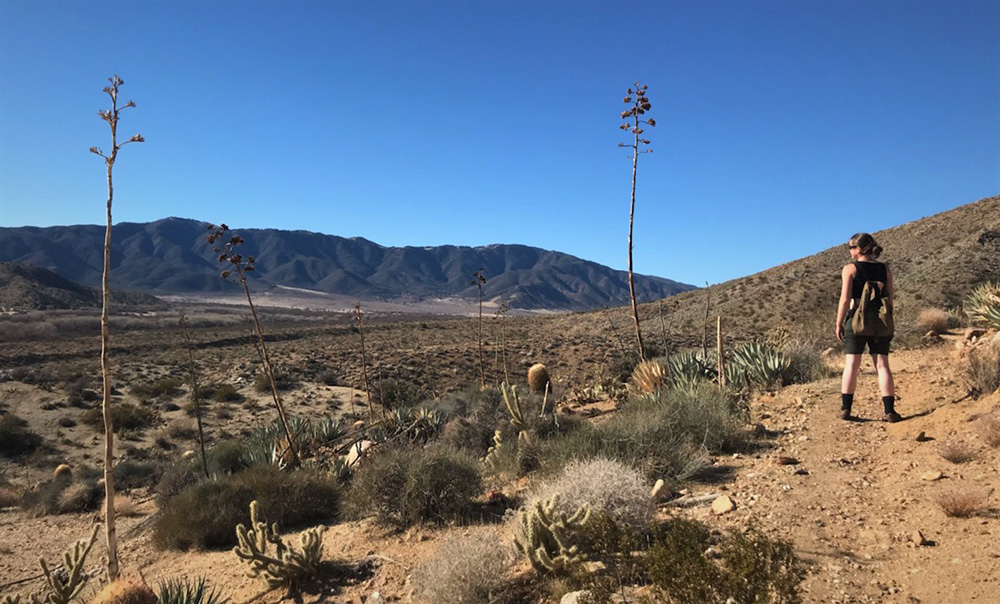
Baskets in Southern California

On a recent trip to California, North House Resident Artisan Emily Derke took some time to look at regional basketry, history, and culture—and soak up some sunshine. Read more in her latest blog post.
January in northern Minnesota is a beautiful time of year. The cold temps don’t stop us from getting out skiing, hiking, and ice fishing, and making our way through the deep snow to feel a little mid-day sunshine in the darkest season of the year. However, January can also be an excellent time to head south to the beach.
I arrived in San Diego, and the birds of paradise were blooming all over the place; the neighborhood citrus trees were loaded with ripe oranges, lemons, and kumquats; and the sun was warm enough to trade in my long underwear for shorts and a tank top.
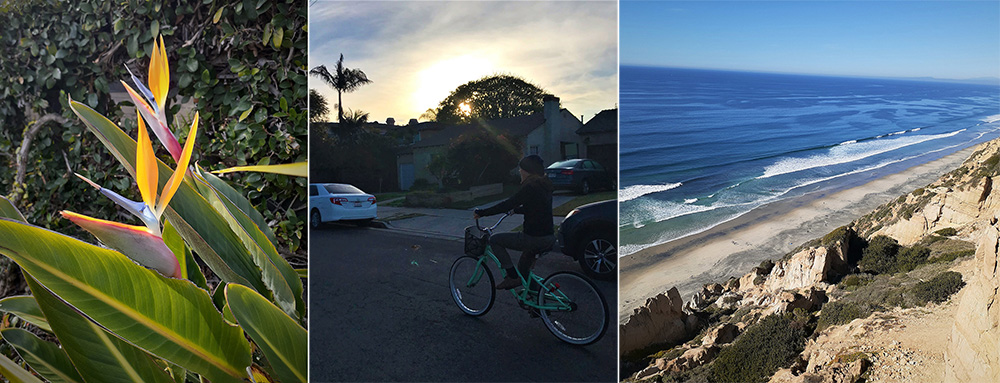
One of my first stops was the Museum of Us, a cultural anthropology museum in San Diego’s Balboa Park. For over 40 years, this place was called the Museum of Man, and in June 2020 was re-named the Museum of Us. It was a years-long process to change the name. The museum says that the name change was a part of a larger effort “to address their work towards inclusion, equity, and decolonization.” There were signs and statements all over the place related to this. All of this upfront talk of change at the museum was a good reminder that while museums are an excellent place to learn and see interesting things, they can also be a place with wrongly acquired artifacts and sacred items, and other harmful practices related to who is represented and the relationships that are or are not present in creating an exhibit.

The museum is currently full of many small exhibits including ancient histories of beer and alcoholic drinks around the world, a heavy-hearted exhibit depicting stories of immigration at the Mexico-U.S. border, and an exhibit curated by groups across the country exploring the history of race, racism, and human biology. There is an exhibit that features a beautiful collection of baskets and other items on display from Kumeyaay weavers and craftspeople.
The Kumeyaay people are the Indigenous people of present-day Southern California (San Diego and western Imperial Counties) and Northern Baja California, inhabiting the deserts, mountains and coastal land.

The Museum of Us states that it is currently working with the Kumeyaay Nation to sort through the collection and determine what they would like to have on display or removed from the collection. The museum also acknowledges that some items in the collection may have been looted, or wrongly acquired. More signs were posted in the area about this on-going discussion.
Alongside some older items, the exhibit features many baskets from skilled, contemporary Kumeyaay weavers who have contributed their work to the collection.
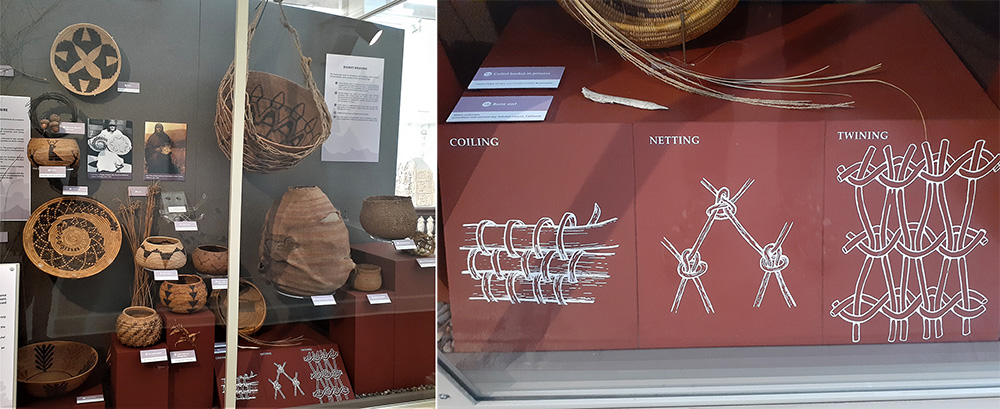
Baskets in this area are made with deer grass, split sumac, juncus, and other plant materials. The fiber for netting is made with agave and palm fibers. The baskets are all twined or coiled, and materials are dyed to make patterns in the basket.
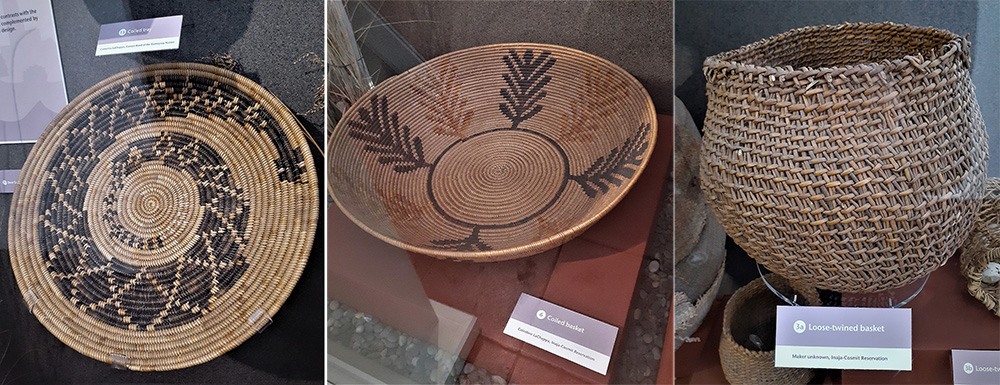
On display was a contemporary-made willow bark skirt, which is a traditional clothing item. Two baskets used in processing acorns were also displayed, along with pottery and a mano and metate—other tools used in processing acorns for food.
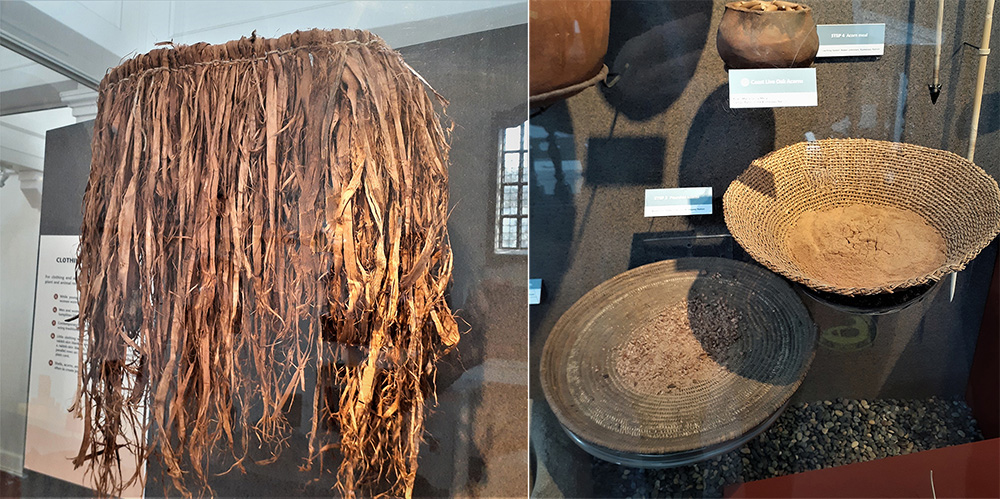
Throughout the rest of the museum, there were a few other baskets of note. In one exhibit, the history of human interaction with animals was explored through looking at the evolution of our relationship with pets, pests and meat.

One basket on display was made to hold a chicken.
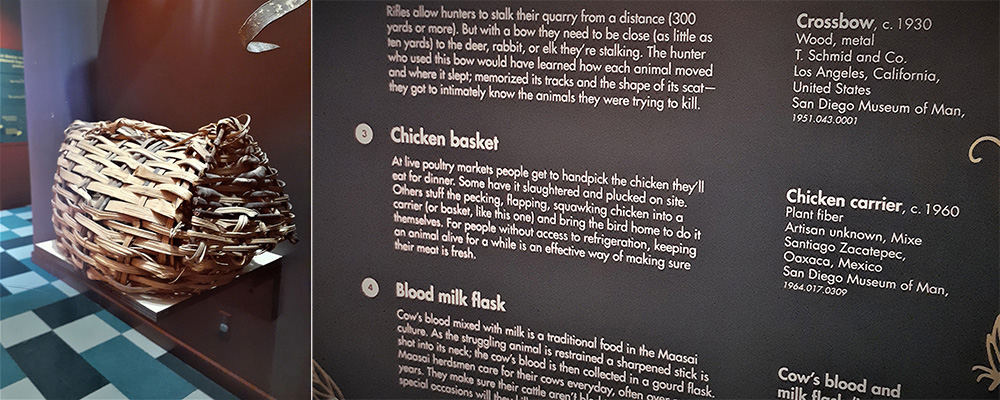
One of my favorite finds was this little display of rodent traps. There was little information about how each one worked, but I was impressed by this collection of just some of the ways humans have tried to keep rodents out of their homes. I couldn’t see inside of this woven trap to understand how it works, but I have to assume it is a functional way of trapping something.
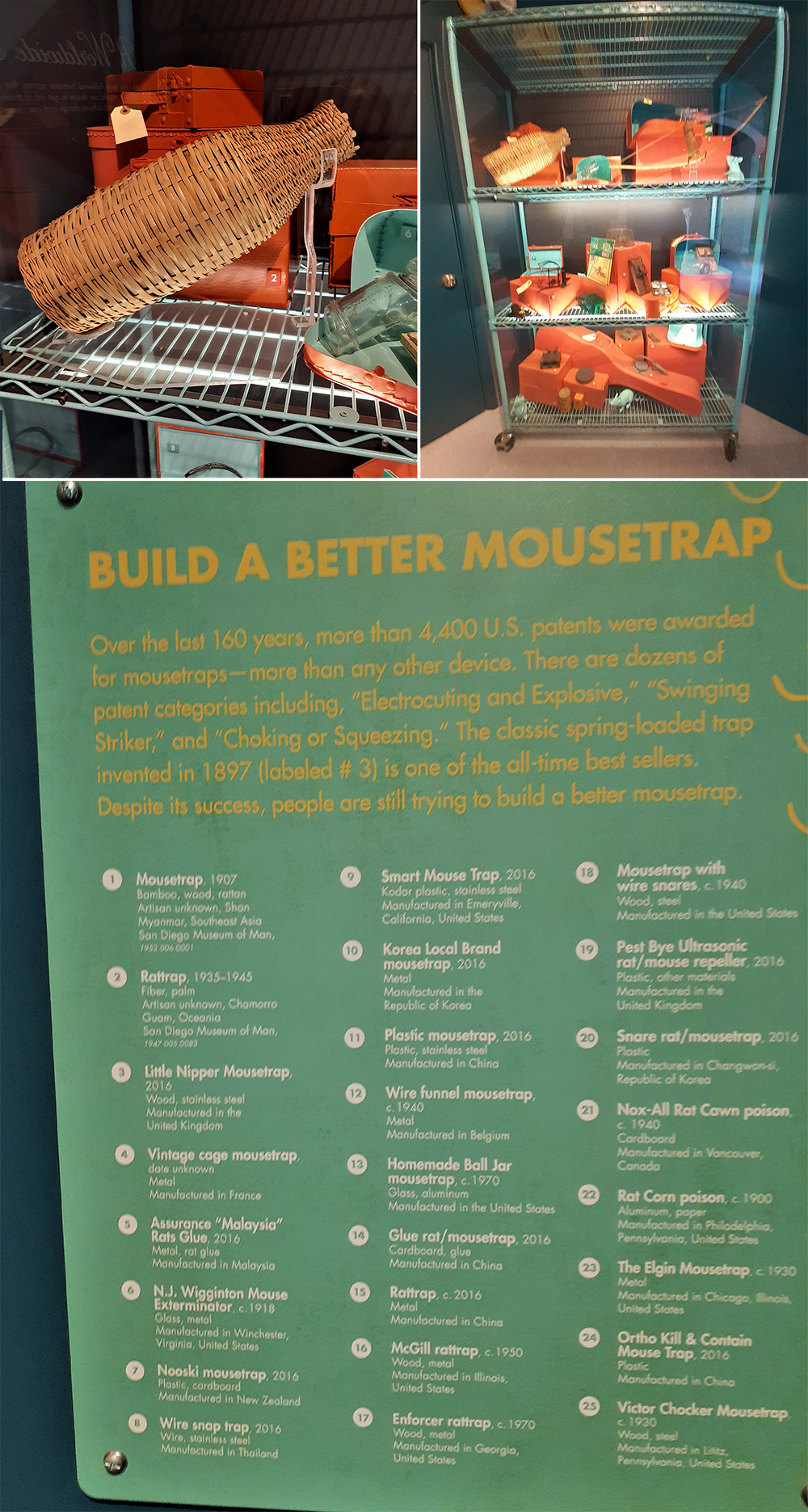
When it was nearing my time to head back to Minnesota, I made sure to eat my fill of the local, in-season foods: Oranges, lemons, guavas, persimmons, avocados, fish, and many burritos. It’s a treat to get to experience a place through the seasonal foods and locally made baskets.
